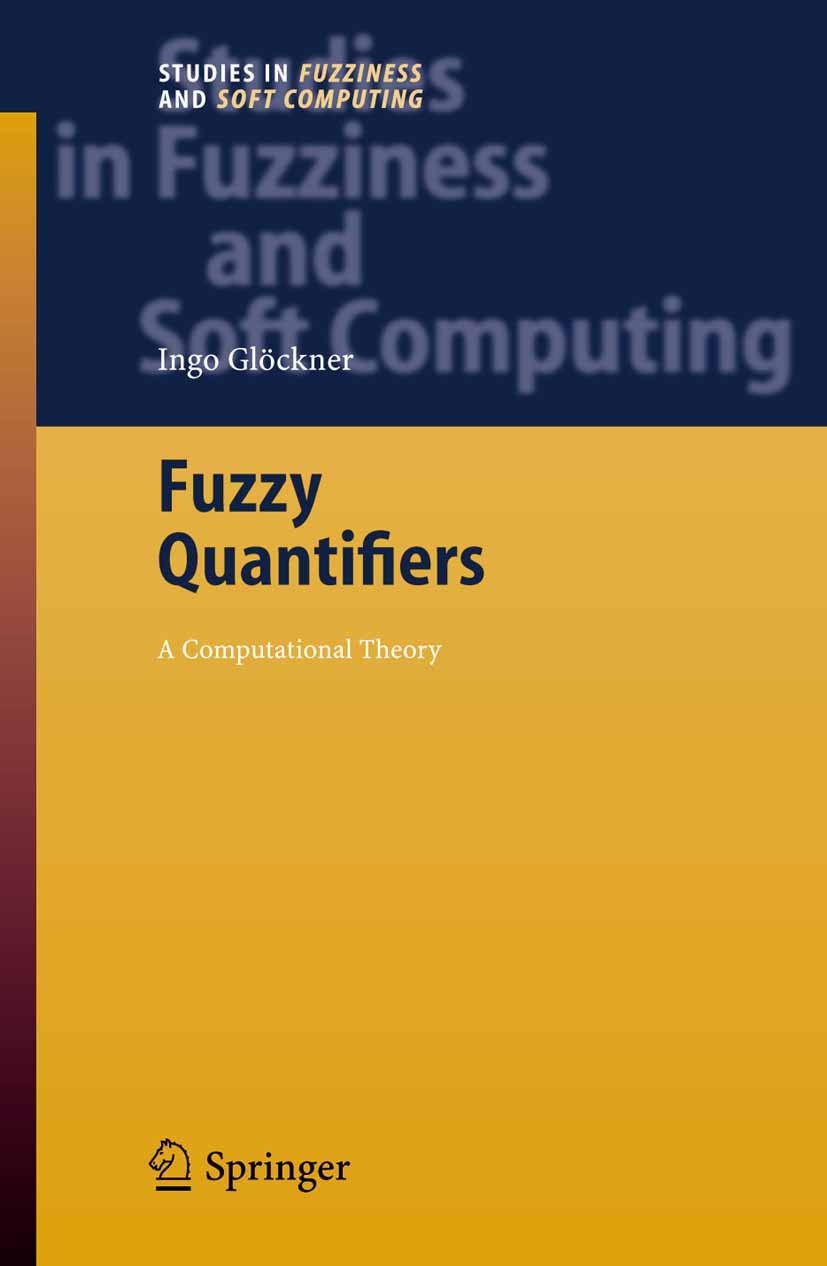| 書目名稱 | Fuzzy Quantifiers | | 副標(biāo)題 | A Computational Theo | | 編輯 | Ingo Gl?ckner | | 視頻video | http://file.papertrans.cn/352/351334/351334.mp4 | | 概述 | First monograph on fuzzy quantification.Strong emphasis on linguistic justification and formal soundness of interpretations | | 叢書名稱 | Studies in Fuzziness and Soft Computing | | 圖書封面 |  | | 描述 | From a linguistic perspective, it is quanti?cation which makes all the di?- ence between “having no dollars” and “having a lot of dollars”. And it is the meaning of the quanti?er “most” which eventually decides if “Most Ame- cans voted Kerry” or “Most Americans voted Bush” (as it stands). Natural language(NL)quanti?erslike“all”,“almostall”,“many”etc. serveanimp- tant purpose because they permit us to speak about properties of collections, as opposed to describing speci?c individuals only; in technical terms, qu- ti?ers are a ‘second-order’ construct. Thus the quantifying statement “Most Americans voted Bush” asserts that the set of voters of George W. Bush c- prisesthemajorityofAmericans,while“Bushsneezes”onlytellsussomething about a speci?c individual. By describing collections rather than individuals, quanti?ers extend the expressive power of natural languages far beyond that of propositional logic and make them a universal communication medium. Hence language heavily depends on quantifying constructions. These often involve fuzzy concepts like “tall”, and they frequently refer to fuzzy quantities in agreement like “about ten”, “almost all”, “many” etc. In order to exploit this e | | 出版日期 | Book 2006 | | 關(guān)鍵詞 | Extension; Fuzzy Quantifiers; Fuzzy Set Theory; Gloeckner; Linguistic Quantifiers; Natural Lanuage Proces | | 版次 | 1 | | doi | https://doi.org/10.1007/3-540-32503-4 | | isbn_softcover | 978-3-642-06743-3 | | isbn_ebook | 978-3-540-32503-1Series ISSN 1434-9922 Series E-ISSN 1860-0808 | | issn_series | 1434-9922 | | copyright | Springer-Verlag Berlin Heidelberg 2006 |
The information of publication is updating

|
|
 |Archiver|手機(jī)版|小黑屋|
派博傳思國際
( 京公網(wǎng)安備110108008328)
GMT+8, 2025-10-14 06:41
|Archiver|手機(jī)版|小黑屋|
派博傳思國際
( 京公網(wǎng)安備110108008328)
GMT+8, 2025-10-14 06:41


